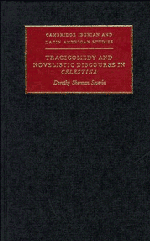Book contents
- Frontmatter
- Contents
- List of illustrations
- Preface
- Abbreviations
- 1 Introduction: Celestina and novelistic discourse
- 2 The prefatory material: the author's ambivalent intentions
- 3 Genre and the parody of courtly love
- 4 From parody to satire: clerical and estates satire
- 5 Verbal humour and the legacy of stagecraft
- 6 The rhetorical shift from comedy to tragedy: ironic foreshadowing and premonitions of death
- 7 Is Melibea a tragic figure?
- 8 Pleberio's lament, Cárcel de Amor, and the Corbacho
- 9 Conclusion: Rojas' ambivalence towards literature
- Notes
- Bibliography
- Index
- CAMBRIDGE IBERIAN AND LATIN AMERICAN STUDIES
3 - Genre and the parody of courtly love
Published online by Cambridge University Press: 05 March 2012
- Frontmatter
- Contents
- List of illustrations
- Preface
- Abbreviations
- 1 Introduction: Celestina and novelistic discourse
- 2 The prefatory material: the author's ambivalent intentions
- 3 Genre and the parody of courtly love
- 4 From parody to satire: clerical and estates satire
- 5 Verbal humour and the legacy of stagecraft
- 6 The rhetorical shift from comedy to tragedy: ironic foreshadowing and premonitions of death
- 7 Is Melibea a tragic figure?
- 8 Pleberio's lament, Cárcel de Amor, and the Corbacho
- 9 Conclusion: Rojas' ambivalence towards literature
- Notes
- Bibliography
- Index
- CAMBRIDGE IBERIAN AND LATIN AMERICAN STUDIES
Summary
Don Quixote is the first modern novel, according to one of the favourite commonplaces of modern literary criticism. But if one applies to Celestina similar criteria to those that we use for this judgement of Don Quixote, we must accord novelistic priority to the earlier work. Although Bakhtin had worked out some of these criteria when discussing Tirant lo Blanc and Don Quixote in The Dialogic Imagination, he does not seem to have known Celestina. However it fulfils his critera for the ‘Second Stylistic Line’ novel, which is based on dialogized comic, ironic or parodic discourse, with ‘literary’ characters who test this discourse by trying to live according to literature.
In Don Quixote Cervantes shows us that it is impossible to live the life of the world of chivalry, that is to say, the world of the medieval romance, in the world of the picaresque. And this is precisely what Fernando de Rojas shows with the figure of Calisto in Celestina one hundred years earlier, since Calisto is a parodic courtly lover, as June Hall Martin has shown. He tries to live the life of a courtly lover of sentimental romance in a dialogic world of prostitutes, servants, pícaros and go-betweens. And, like Quixote, Calisto fails in his attempt and finally dies. Obviously, this is a simplification. There is a great difference between the wise fool Quixote and the erotic egotist Calisto.
- Type
- Chapter
- Information
- Tragicomedy and Novelistic Discourse in Celestina , pp. 23 - 48Publisher: Cambridge University PressPrint publication year: 1989

